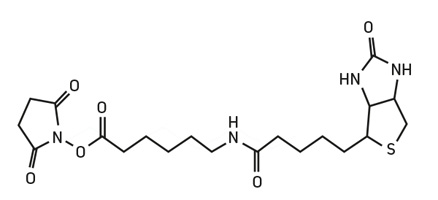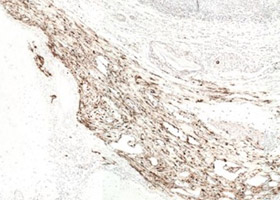Biotin (= Vitamin H) is a stable, relatively small molecule that non-covalently binds to avidin (a protein from egg white) or streptavidin (a protein isolated from Streptomyces avidinii). This interaction occurs with high affinity and can be used for signal amplification in immunoassays.

Biotin-SP (long spacer) is the trade name of Jackson ImmunoResearch for Biotin with a long spacer (6 atoms) that is located between biotin and conjugated protein (see image). The combination of Biotin-SP conjugated secondary antibodies and streptavidin-alkaline phosphates (ALP) or streptavidin-horseradish peroxidase (HRP) can increase sensitivity in enzyme-immunosassays (EIA) compared to directly conjugated (without spacer) antibodies. The linker (22.4 Ä) extends the space between secondary antibody and biotin, making the protein surface more accessible for streptavidin-enzymes.


Additional reagents are required for the visualization of biotin-conjugated secondary antibodies. We offer streptavidin and mouse anti-biotin antibodies conjugated to fluorescent dyes or enzymes.
References:
- Jackson ImmunoResearch: Catalogue 2019
- Mulisch, M. & Welsch, U. Romeis – Mikroskopische Technik. (Springer-Verlag, 2015).
